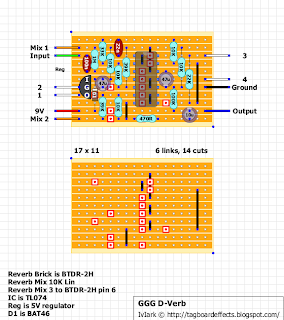From UnofficialAmpeg.com: During MTI's ownership of Ampeg, everything was being built in Japan. Ampeg's most extensive line of pedals is no exception. In production during 1982 and 1983, the "A" series effects were housed in black steel boxes with brightly colored graphics in pinks, oranges, blues, yellows, etc., and included nine pedals and a "systems box".
From what i can tell from the prices i've seen - these are very collectible pedals. Might be a nice subject for building your own. The semiconductors are not mentioned (other than 4558 as opamp) on the schematic, but as the transistors are used as buffers, you should be fine with 2N3904, 2N5088 or similar. The clipper diodes are silicon, so 1N4148 should be very close to the original.
















